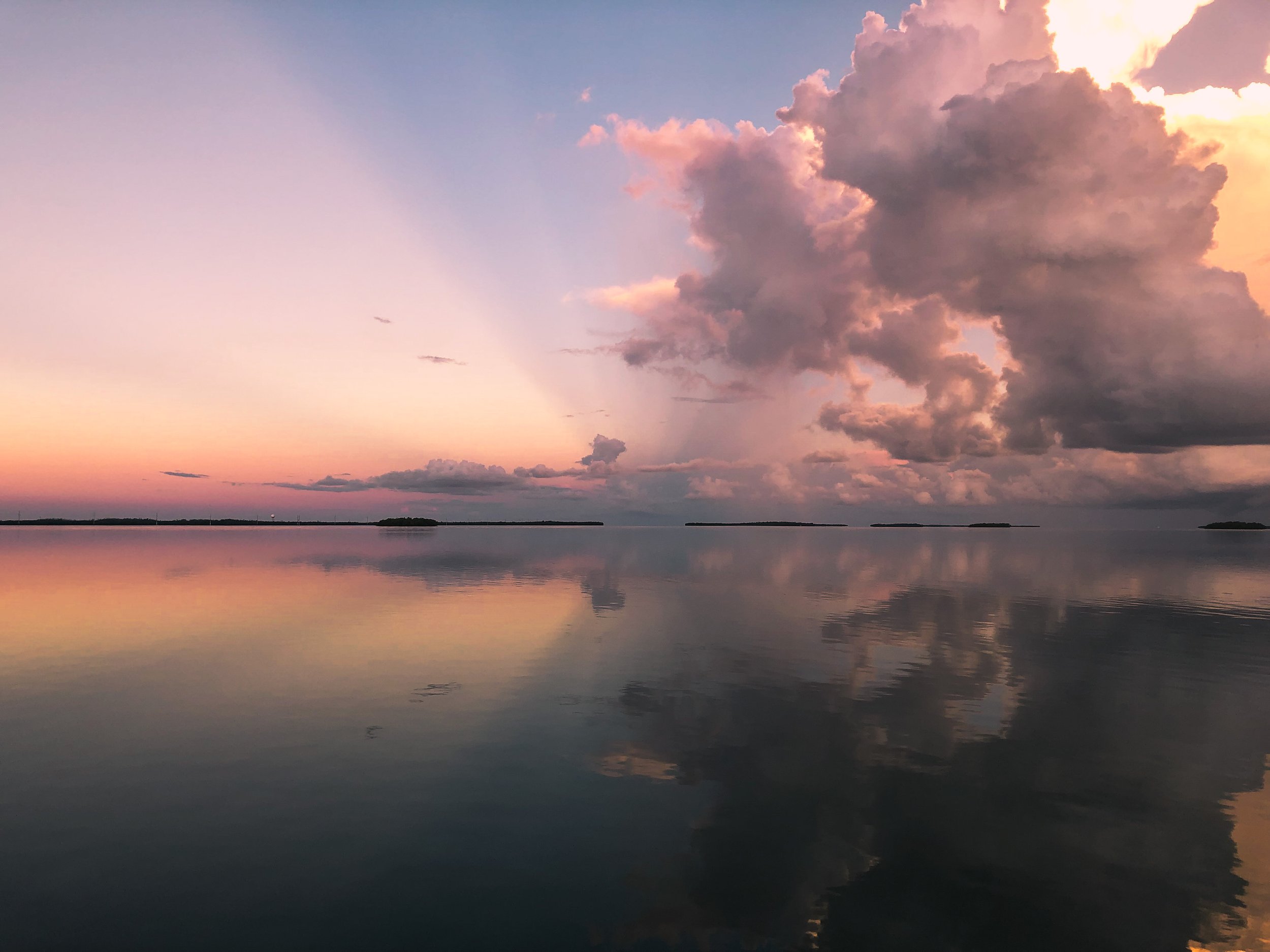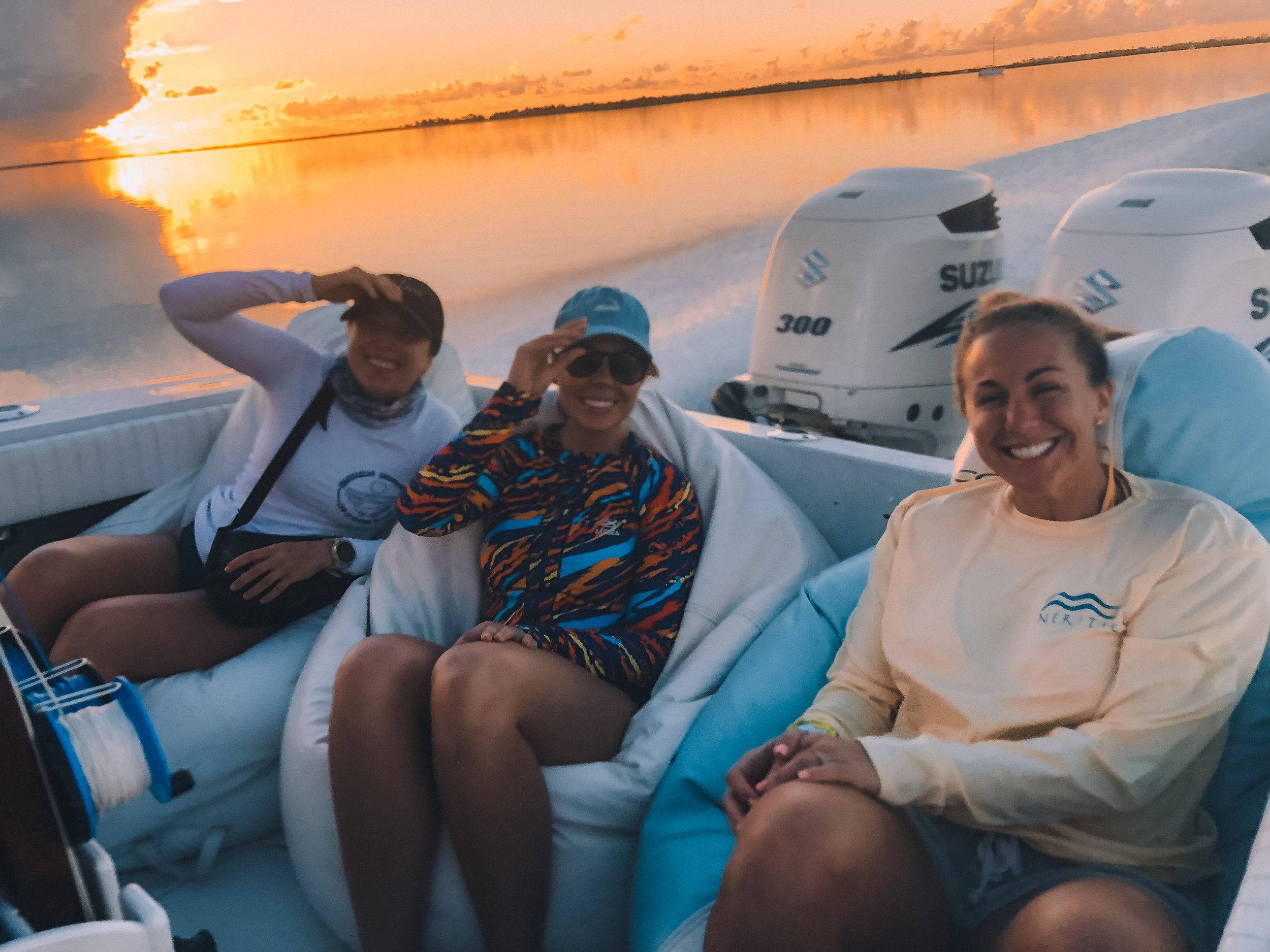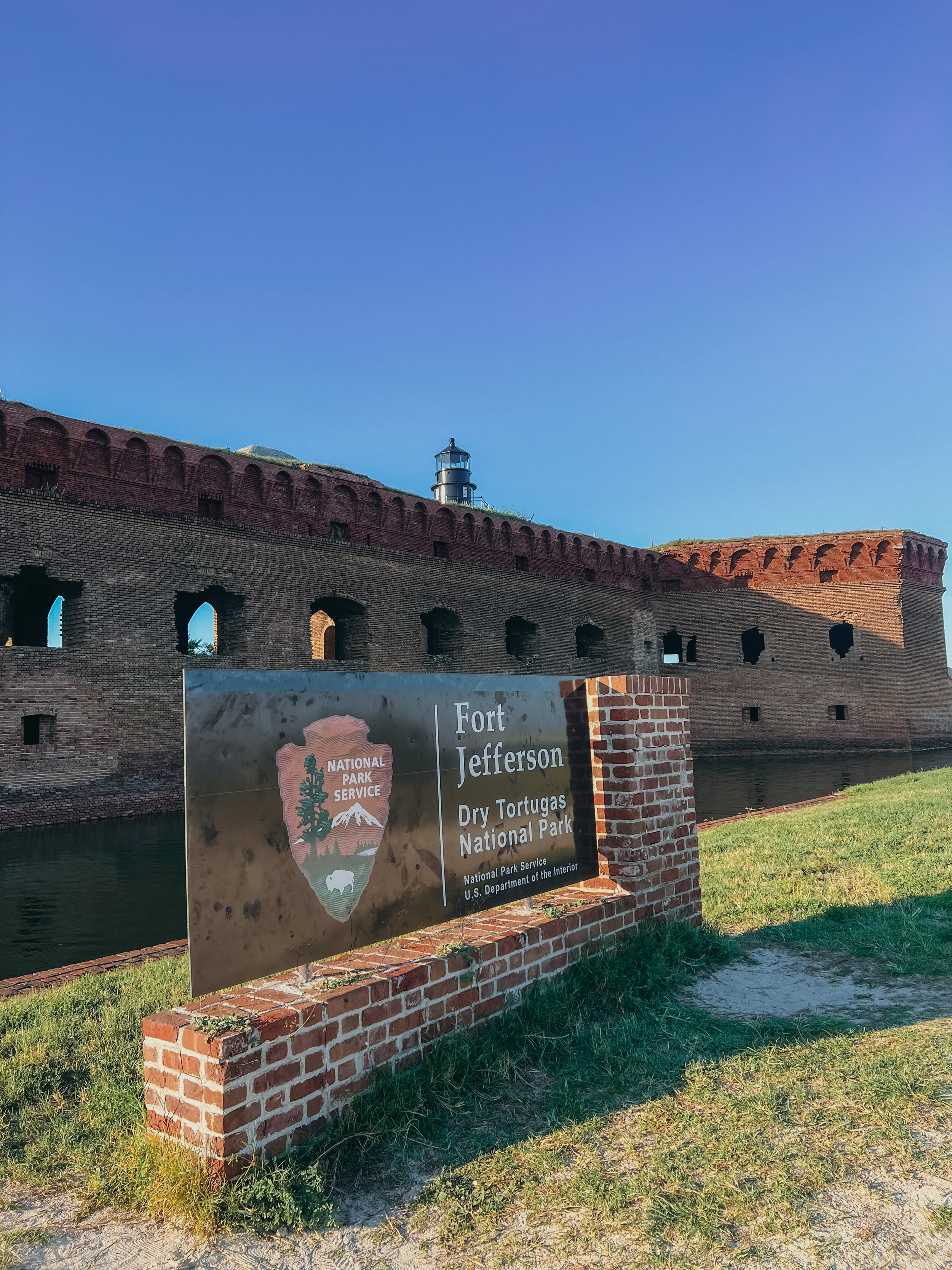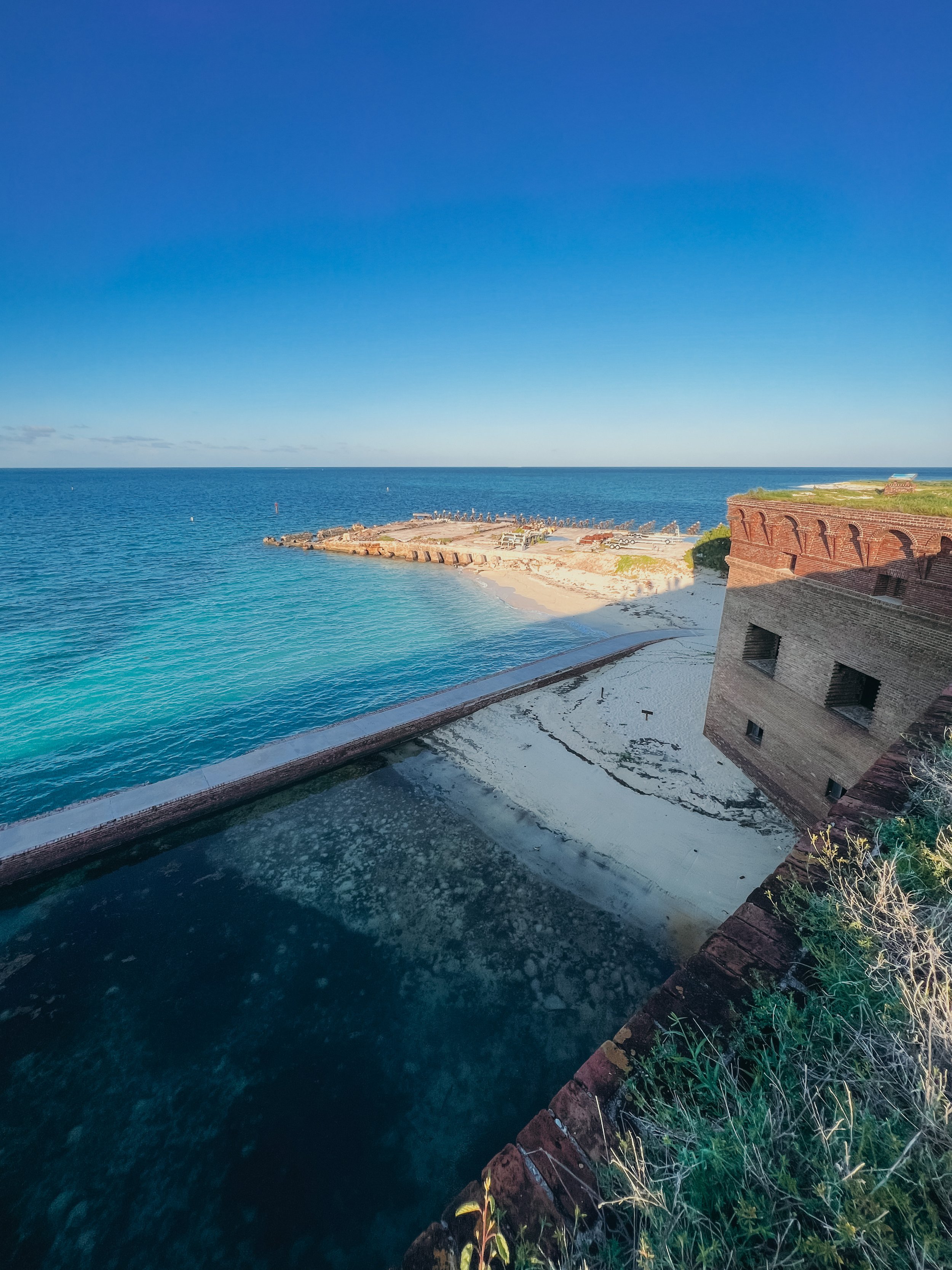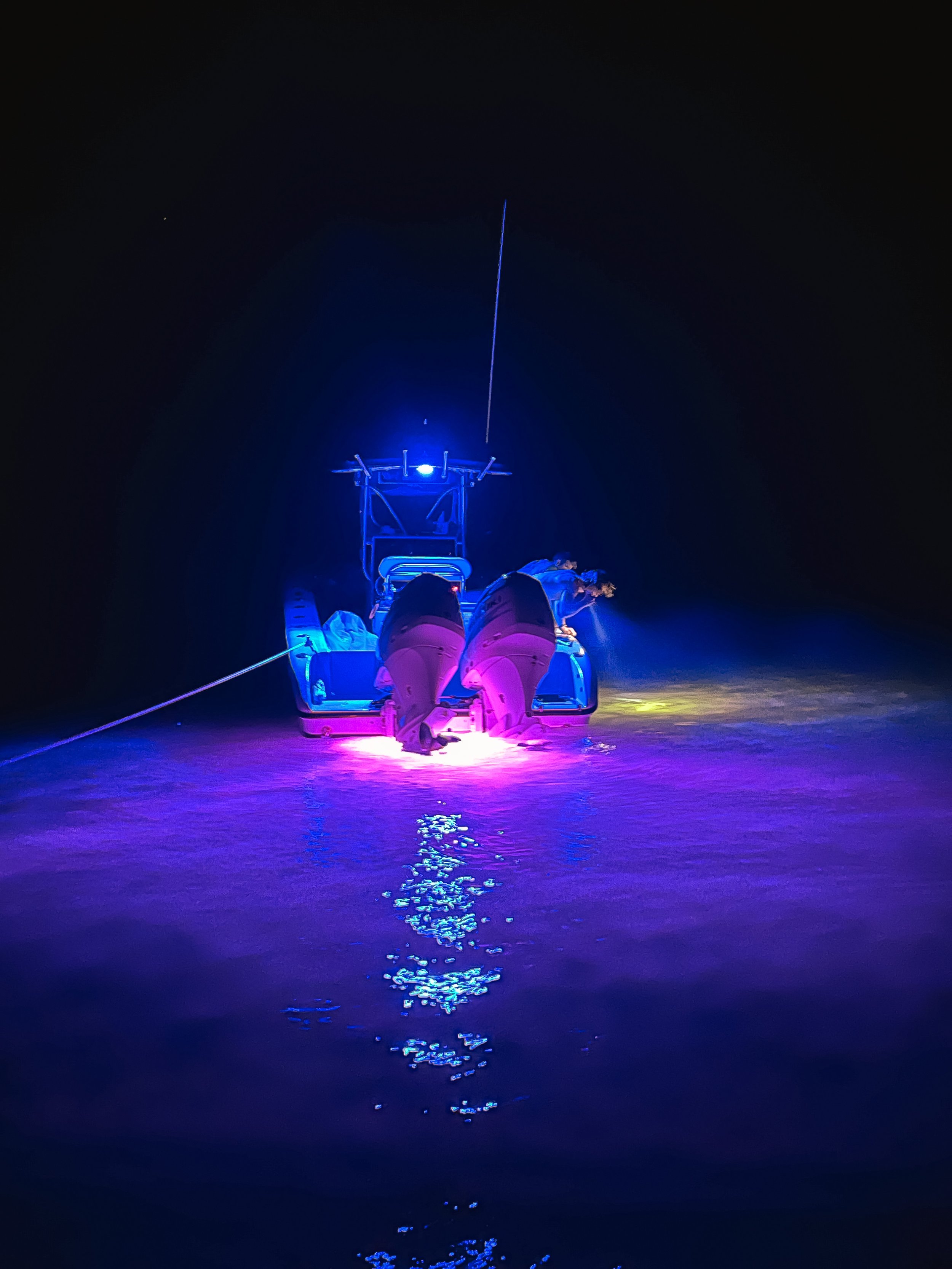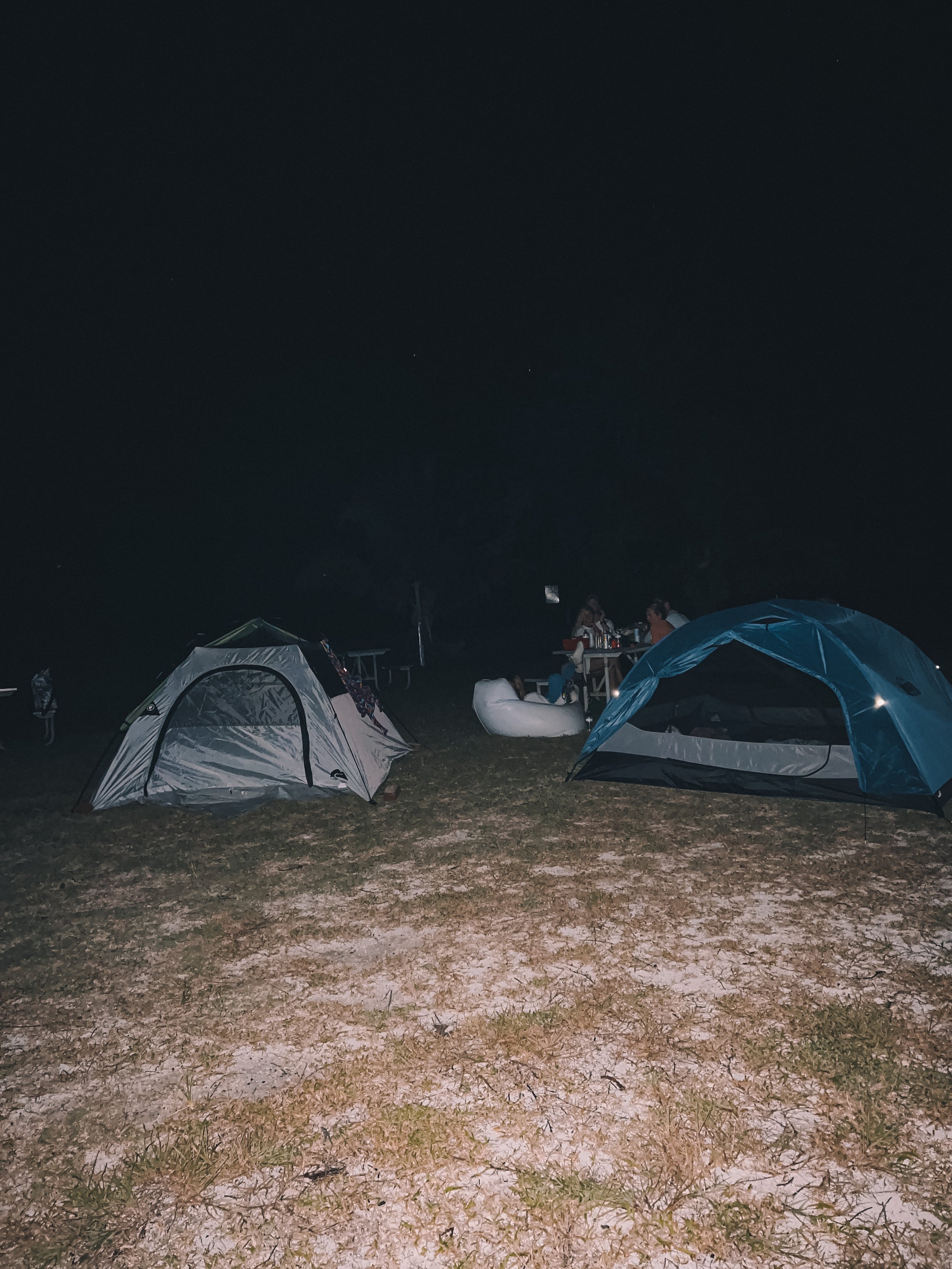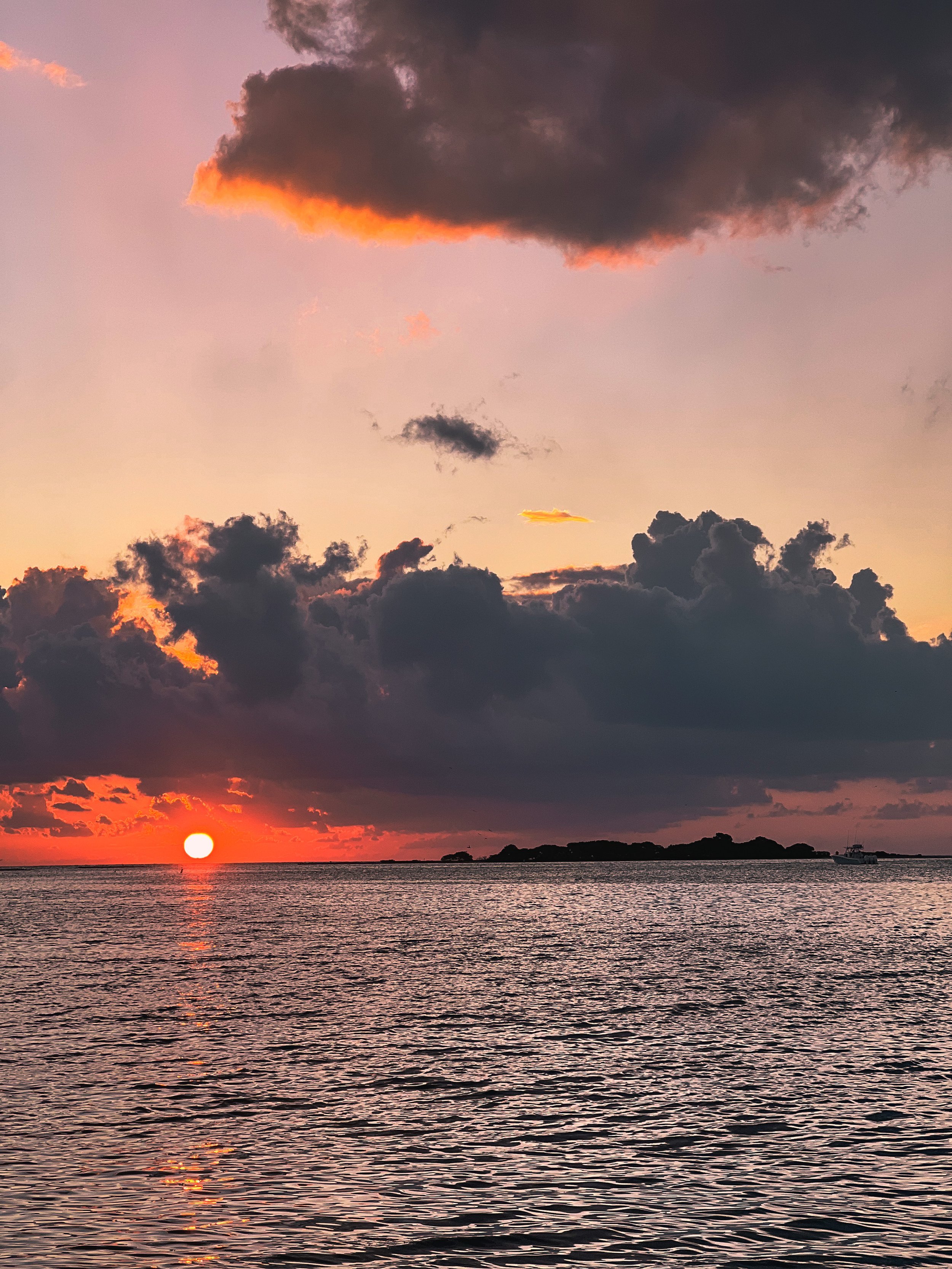I just spent an incredible 48 hours immersed in nature. CJ and I, along with 3 other couple of friends, left early on Friday morning for an adventure in the Florida Keys. At first I was a little disappointed because we were supposed to go to the Bahamas for a long weekend but Hurricane Fiona was already here and a tropical depression (that would later become hurricane Ian) was on its way so we had to adapt and improvise.
We woke up early on Friday morning and left at sunrise to head out in the Gulf to spearfish while making our way to the Fort. It was a bumpier ride than expected to get there but the view was beautiful and we got to see a double rainbow.
Once we were able to get in the water to go spearfishing, it was all worth it! I got in the water and was able to spear a nice mangrove snapper that wasn’t too deep near a structure. The water was warm and clear, first spot was a success.
Then we made our way to the next location getting closer to Dry Tortugas and it was blowing up with underwater life. Schools of permits were swimming around us. Emily was just getting into freediving and was able to shoot her first fish too! I dove with her for a little bit and then saw a nice permit that I was able to spear and fight back to the surface. Needed an assist from CJ near the end but I’m getting better and better at wrangling the fish by myself. I can still hear him screaming at me to just ‘‘hug it’’ when I swam to the surface. It was a pretty good feeling, I felt very satisfied, especially knowing that we’d be grilling and making fresh ceviche with our fish a little later.
After we were done spearfishing, we made the final stretch to the Dry Tortugas National Park to set up camp before dark. We docked the boat and set foot on the island to go visit Fort Jefferson. The history surround the park and the fort was fascinating and there was a certain awe that came with being able to stand in the middle of this place.
Fort Jefferson was built to protect the southern coastline of the United States and the lifeline of commerce to and from the Mississippi River. The fort was planned to be the greatest of these.
Fort Jefferson itself is a six-sided building constructed of 16 million handmade red bricks. In 1825 a lighthouse was built on Garden Key to provide warning to sailors about the dangers of reefs and shoals surrounding the Dry Tortugas.
In the 19th century, during The Civil War, the fort was used as a prison and its most famous prisoner, Dr. Samuel Mudd, who was imprisoned for his involvement in the assassination of President Abraham Lincoln. During its time, Fort Jefferson held over 2,500 prisoners. After its use as a prison, Fort Jefferson became a quarantine station for the Marine-Hospital Service from 1888-1900, during which the location was also used in the Spanish-American War*.
After our visit to the Fort, we went back to the boat to get all our camping supplies and set up before dark. CJ and I didn’t bring a tent and decided we were just going to sleep on the boat under the stars with a make-shift bed consisting of three bean bags.
While the crew was setting up, I went for a sunset swim by the wall and watched the sunset from the ocean. The sky was on fire and it was gorgeous. I even saw a huge turtle swimming through the wall.
Then it was time to make dinner! We cut up some fresh snapper and permit to grill and to make ceviche and it was delicious! The best part was the starry night, because we were in the middle of nowhere it was pitch black outside and we could see the milky way. I even fell asleep watching shooting stars.
Why is it called ‘‘Dry Tortugas’’ ?
Ponce de Leon discovered the Dry Tortugas in 1513 when he caught over 100 sea turtles there. Subsequently the islands were referred to as the “Tortugas” (turtles). During the 1600s and 1700s the area around these islands was used by pirates as a base for attacking merchant shipping in the Gulf.



